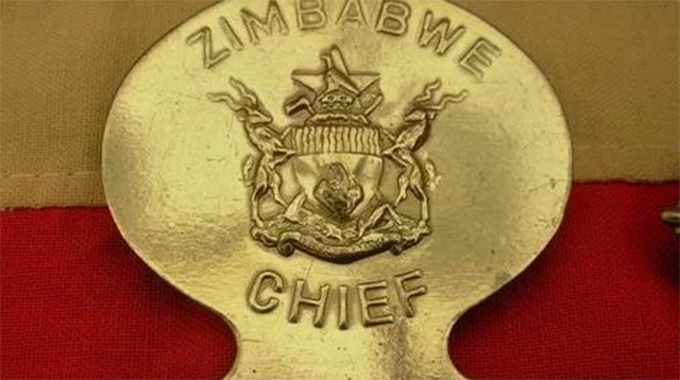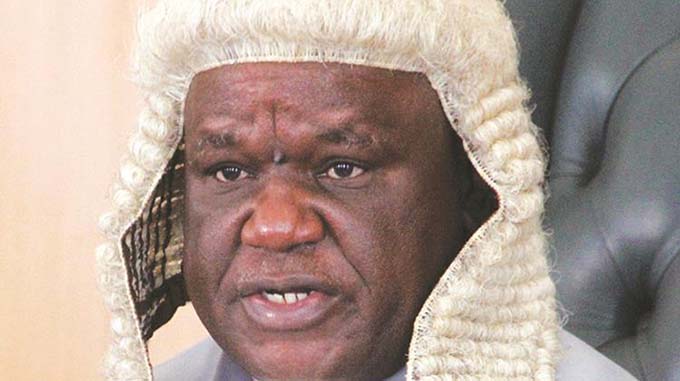Editorial Comment: Chiefs have crucial role in ending child marriages

CUSTOM is not something set in stone: it is a living and ever-changing concept so that how our great grandparents lived, how they saw the world, and what they accepted as the norm is not necessarily how we live, see the world and find acceptable.
This is important when we look at the major changes in how we want to treat girls, and especially in what we see as the age of marriage. Constitutional Court judge Justice Rita Makarau chose this topic as the centrepiece of her address when she opened the new legal year this week in Masvingo and called on traditional leaders not just to follow the law in refusing to solemnise marriages of children under 18, but also to enforce the ban and help their people understand that custom must fit the law.
Progress is being made. ZimStat, our national statistics agency, has been finding out the facts. Detailed sampling discovered that around a third of women married before their 18th birthday, with the percentage significantly higher in rural areas and with families described as “traditional” in religious outlook going over 50 percent, and those described as “apostolic” almost as serious at 46 percent.
Percentages fell as you moved across the religious ladder with Catholics just over 17 percent and mainline protestants just over 16 percent, still worrisome, but showing that the active disapproval of ministers of religion and church authorities had made a difference over the years and the decades. That shows we can all make a difference if we push.
These figures in many ways present a distorted picture, since the percentages were for all women, right from those just married up to those who were married below the age of 18 perhaps 60 or 70 or even 80 years ago. So they do not show what is happening today, right now.
So ZimStat in the 2022 Census reports decided to find out, to see what is happening now and very recently, counting recent marriages, as well as what has happened many years ago.
The Census data revealed that of all women aged between 20 and 24 on census night, 16,2 percent had been married before their 18th birthday and one percent were married by their 15th birthday.
The bit of good news, just about the only bit of good news, was that the percentage of child marriages was falling significantly, percentages for young women less than half of those for all women combined.
But we need to remember that all those young women in that 16,2 percent were married while still legally children after our Constitution banned such marriages.
That Constitution, remember, was not something imposed by outsiders or hurriedly shoved together in cross-party political negotiation, but something drawn up with the participation of all of us, so some people agreed to the new minimum age of marriage in discussion and in a referendum, but acted otherwise in letting girls, or making girls, marry young.
There was a rural-urban divide, quite a severe one, with 22,7 percent of rural women between 20 and 24 married before they were 18, compared to 7,2 percent in urban areas.
But even that urban percentage is totally unacceptable so city dwellers, where traditional leadership does not have much sway, cannot be smug. The under 15 marriages were also rural weighted, with 1,6 percent of young rural women married before they were 15 and 0,3 percent of urban young women.
We are not talking about a few here or there, we are talking about thousands of young teenagers, even in cities, being married when they should still be in the lower forms of high school.
One particular problem, not often addressed, is that the overwhelming majority of customary marriages are not registered or solemnised until much later. This is how they have always been, with the marriage accepted, willingly or reluctantly or forcibly by the couple, and by the two families and so by the community at large.
The absence of official paperwork has never been an impediment to what most people see as a proper marriage by a respectable couple.
But this means that no one in authority can take prompt action if the couple and witnesses do not come forward for registration or solemnisation, so enforcing the ban on under-age marriage is difficult.
The new Marriages Act signed into law last year brings our marriage legislation into line with the Constitution, although even the two old laws still had 16 as the minimum age and obviously they were being breached by thousands in recent years.
It also significantly updated and upgraded the modern customary marriages, and so custom itself, with that solemnisation procedure before a chief or a magistrate and a requirement to register.
But the new minimum age in civil marriages showed that our customs outside the traditional communities were also changed. It was universal, across all cultures.
And the wall between civil and customary marriage was finally broken down with a monogamous couple married under customary law able to convert to a civil marriage, which allows the church wedding many want as well as the customary marriage, and that was the main reason why almost all customary marriages were not officially registered in recent decades.
We are not that worried that traditional chiefs will be solemnising a customary union with at least one partner underage.
They will not and are in fact in the forefront in wishing to solemnise legal customary marriages and can be expected to universally enforce the new law.
But, as Justice Makarau indicated, they need to go further and use their customary authority, as the guardians of customary practices, to spread and enforce our concepts of custom.
They must help a significant minority, that 16 percent of families uncovered by ZimStat, understand that even the household procedures involving underage customary marriage, or pledging of young girls in marriage, are no longer acceptable in custom as well as in law.
This is happening, with some chiefs now moving a step further and being very active as these illegal semi-secret marriages come to their attention.
But communities also need to take action; for a start someone has to bring the fact of an underage marriage or better still impending marriage to the attention of the chief and other authorities, remembering all those urban underage marriages outside traditional authority.
It is also necessary for communities to make it clear that this is no longer acceptable. Communities have the backing these days of both the statute law and the customary law, and now of custom itself as enunciated by chiefs, whose word is largely final on just what custom is within a particular set of communities.
The concepts of tradition and custom are different. Tradition is largely what our great grandparents did. Custom is what we do. And while we can learn from tradition we also need to adapt tradition into our customs as we gain ever greater understanding.
Change is not rejection of culture, it is growth of culture and custom. By accepting that growth we can have it both ways, a living vibrant culture and custom, but rooted in our traditions.










Comments